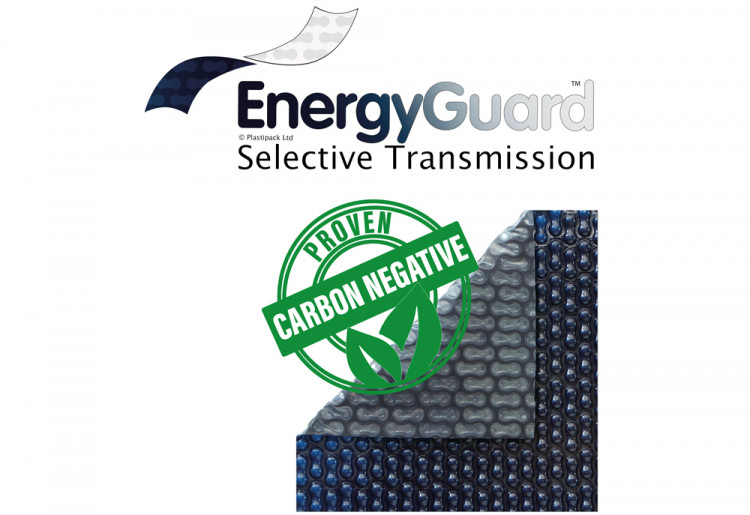After undertaking an independently verified Life Cycle Analysis (LCA), Plastipack Ltd, the manufacturer of GeoBubbleTM technology pool cover material, can announce the first of our Carbon Negative products - EnergyGuardTM Selective Transmission, and the standard Light Blue GeoBubbleTM material.
Pool covers reducing the financial and environmental cost
Alongside efforts made within the production and distribution processes to reduce carbon emissions, GeoBubbleTM products can also work to save carbon emissions when in use on a pool. EnergyGuardTM Selective Transmission's unique benefits offer energy and resource savings that have a direct impact in reducing both the cost and environmental impact of running the pool.
Heat pump energy consumption tests on the bespoke testing facility highlight that EnergyGuardTM Selective Transmission can reduce energy consumption by 87% when compared to an uncovered pool. These energy savings represent both a financial and environmental benefit. Within its warrantied 8-year lifespan an average EnergyGuardTM Selective Transmission cover will save 1,091KgCO2e in energy related carbon emissions. The cover's ability to inhibit algae growth and act as a physical barrier to dirt and debris contamination can reduce the chemical consumption of a pool by up to 60%. Saving 34kg CO2e per m² over the lifespan of the product, EnergyGuardTM Selective Transmission is a proven carbon negative material.
Manufacture of EnergyGuardTM Selective Transmission
The same report also showed that the standard 400 micron Light Blue GeoBubbleTM material saved 7kg CO2e per m² over its 4 year warrantied lifespan. So using even a standard GeoBubbleTM cover, also has a positive environmental impact.
A Life Cycle Assessment (LCA) is a holistic review of the environmental impact of a product throughout its whole life. The environmental impact of the product is expressed in terms of carbon emissions (kgCO2e) per functional unit. An LCA will take into consideration all carbon emissions resulting from the materials and energy consumed within a product's life, starting from the sourcing and manufacturing stage, through its distribution and use and finally the end-of life. It will also consider any potential for reduction in emissions or carbon savings resulting from the efficiencies brought about by use of the product.
Carbon negative products are those that bring about a net saving in carbon emissions over the course of their lifetime.To find out more, visit the website.













